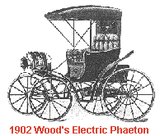Impact of Electric Cars On Drivers Ed
Cars have been a primary method of transportation since the early 1900's and the electric car is finally getting its day in the sun. The electric car has an intersting history and modern electric cars are gaining in popularity. However, driving an electric car requires a bit of adjustment and this article covers a few tips before getting behind the wheel.
 The concept of the electric car (a.k.a. electric vehicle or EV) is a very old concept dating back to the mid 1800's. The problem throughout the history of the electric car is the limitation of battery technology, which even today is a major issue when dealing with an EV. However, with current technology refinements it appears that there is enough momentum behind electric cars to warrant discussing the items that are specific to dealing with this updated form of transportation. Managing an electric car is somewhat different than a traditional gasoline powered car and online drivers ed programs do need to take this into account.
The concept of the electric car (a.k.a. electric vehicle or EV) is a very old concept dating back to the mid 1800's. The problem throughout the history of the electric car is the limitation of battery technology, which even today is a major issue when dealing with an EV. However, with current technology refinements it appears that there is enough momentum behind electric cars to warrant discussing the items that are specific to dealing with this updated form of transportation. Managing an electric car is somewhat different than a traditional gasoline powered car and online drivers ed programs do need to take this into account.
 The modern EV seems poised to take a prominent position in our society. Over the next few years, EVs will begin to appear from virtually all car manufacturers. Given the introduction of many new and exciting models, a resource can be found at www.hybridcars.com/electric-car. Increases in battery technology which provide longer range and quicker refill times have paved the way for the practical electric car. Additionally, the proliferation of charging stations will make the EV an even more practical form of transportation.
The modern EV seems poised to take a prominent position in our society. Over the next few years, EVs will begin to appear from virtually all car manufacturers. Given the introduction of many new and exciting models, a resource can be found at www.hybridcars.com/electric-car. Increases in battery technology which provide longer range and quicker refill times have paved the way for the practical electric car. Additionally, the proliferation of charging stations will make the EV an even more practical form of transportation.
Now, for a few items that affect daily use of EVs:
- No exhaust sound. Given the power is provided by one or more electric motors, the typical exhaust sound of an internal combustion engine burning gasoline is not present. Generally this is a good thing that results in lower noise for both the driver and the outside world. However, the noise from a gasoline-powered car has been with us for a very long time and is ingrained into society. Both drivers, pedestrians, and animals recogize this sound and use its presence to avoid mishaps with fast moving cars. Drivers of electric cars need to pay closer attention to their surroundings as their vehicle is less recognizable by its sound.
- Fill-up time. There is no doubt that managing the charge of the battery is a major concern in an electric car. EVs can charge at a rate of between 30 - 60 miles of range in a given hour. This is significantly slower than gasoline, where in a 5 minute stop a car can be "charged" to a 300 mile range resulting in an equivalent 3,600 mile range charge per hour. So, keeping the EV charged every night is a good idea. Charging outlets are proliferating at places like restaurants, parking lots, interstate rest stops, etc. It is also a good idea to "plug-in" whenever possible. For example, when visiting a restaurant search for a charging station and if available plug-in and let your car charge while you eat.
- Accelator pedal as brake. An interesting side effect of electric car technology is that the motors that drive the wheels also act as generators when braking, which is technically known as "regeneration". This provides for EVs to actually charge the battery under braking, which helps increase the range of the vehicle. The impact on the driver is that by simply removing pressure on the accelerator, the car will begin to "brake" and the driver will often be using the brake pedal less often. EVs are conceptually closer to a "one pedal" design which requires the driver to have a different strategy when managing vehicle speed.
- Battery management. Most EVs will have a set of gauges keeping the driver informed on the state of the battery. A closer eye needs to be kept on the "remaining range" guage given that it takes a relatively long time to fill-up a battery and today there are still few charging stations available.
- EV Advantages. In some states, drivers of EVs are allowed special privileges such as unlimited access to HOV lanes. For example, California drivers ed programs should teach their students the fact that drivers of electric cars can utilize the HOV lanes at any point in time.
Its an exciting time in the automobile industry and electric cars are paving the way to some radical and very needed changes. In the future we will see widespread adoption of electric cars with all of their beneifts. However, as with any new technology there is a learning curve and drivers need to take the time to understand how to take advantage of these changes. Our drivers ed programs need to be updated so novice drivers will understand EVs as part of their initial driver education.
